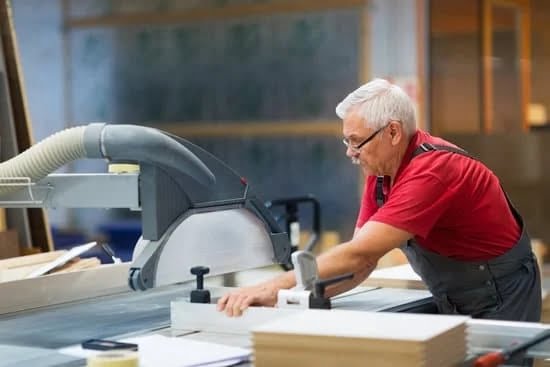What is a combination square used for in woodwork? A combination square is an essential tool for any woodworker, providing precision measurement and versatility in various woodworking tasks. From marking to straightedging and leveling, a combination square plays a crucial role in ensuring accuracy and efficiency in woodworking projects.
The significance of a combination square in woodwork cannot be overstated. This versatile tool is designed to facilitate precise measurements, making it an indispensable asset for any woodworker. Understanding the importance of a combination square is essential for mastering the art of woodworking and achieving professional-quality results.
In this article, we will delve into the anatomy of a combination square, its components, and how it ensures accuracy in woodworking. We will also explore the various functions and techniques for using a combination square, as well as tips, tricks, and common mistakes to avoid when using this invaluable tool. By the end of this comprehensive guide, you will have a thorough understanding of why a combination square is an indispensable tool for any woodworking enthusiast.
The Anatomy of a Combination Square
A combination square consists of several key components that contribute to its versatility and accuracy in woodworking. The main parts of a combination square include the ruler, the head, the scriber, and the level bubble.
The ruler is typically made of stainless steel and features measurements in inches and centimeters, allowing for precise marking and measuring during woodworking projects. The head of the combination square is adjustable and can be locked at various angles, making it ideal for tasks such as setting bevels or checking for squareness.
The scriber is another important component of a combination square, which is used for marking surfaces with precision. It can be adjusted along the ruler and locked in place to ensure accurate measurements. Additionally, some combination squares come with a level bubble integrated into the head, allowing woodworkers to check for level and plumb while working on their projects.
When considering what a combination square is used for in woodwork, understanding its anatomy is crucial. Each component plays a vital role in ensuring accurate measurements and markings, making it an indispensable tool for any woodworking enthusiast or professional.
| Component | Function |
|---|---|
| Ruler | Precise measurement and marking |
| Head | Adjustable angle locking for bevels and squareness |
| Scriber | Precision marking on surfaces |
| Level Bubble | Checking for level and plumb |
Precision Measurement
A combination square is a valuable tool in woodworking, especially when it comes to precision measurement. In this section, we will delve deeper into how a combination square ensures accuracy in woodworking projects.
The Role of the Combination Square in Precision Measurement
The combination square plays a vital role in ensuring precision measurement when working with wood. Its ability to accurately measure and mark angles, depths, and lengths makes it an indispensable tool for woodworkers. The adjustable steel ruler, spirit level, and protractor head allow for precise measurements and markings, ultimately resulting in accurate cuts and joints.
Using the Combination Square for Layout and Marking
One of the key functions of a combination square in woodworking is its use for layout and marking. Woodworkers rely on the combination square to create straight lines, angles, and measurements on their workpiece. The square head of the tool can be adjusted to different angles, allowing for versatile marking capabilities that contribute to the overall accuracy of a woodworking project.
Ensuring Consistency and Efficiency
By employing a combination square during woodworking tasks, woodworkers can ensure consistency and efficiency in their measurements and markings. This promotes accuracy across multiple pieces of wood that need to fit together seamlessly in a project. Whether it’s marking out joinery or laying out a design, the precision offered by the combination square is crucial in achieving high-quality results.
In essence, the combination square serves as a reliable instrument for ensuring precise measurements and markings in woodworking projects. Its versatility and accuracy make it an essential tool for any woodworker looking to achieve professional results.
Versatility at Its Finest
A combination square is an essential tool in woodworking due to its versatility and ability to perform various functions. This tool consists of several components that allow woodworkers to measure, mark, and ensure accuracy in their projects. In this section, we will delve into the different functions of a combination square and how it can be used effectively in woodworking.
One of the main functions of a combination square is as a measuring tool. Woodworkers can use it to accurately measure angles and distances, ensuring precision in their work. The built-in ruler allows for quick and precise measurements, making it an indispensable tool for any woodworking project.
In addition to measuring, a combination square can also be used as a marking tool. Its adjustable head and built-in level make it easy to scribe lines on wood with accuracy. Whether it’s marking for cuts, joints, or other details, the combination square provides woodworkers with a reliable way to transfer measurements onto their workpiece.
Another important function of a combination square is serving as a straightedge. With its flat edge, woodworkers can use the combination square to draw straight lines or check the straightness of an edge. This ensures that the wood is being worked on accurately and precisely according to the desired measurements.
| Function | Description |
|---|---|
| Measuring | Accurately measures angles and distances for precise woodworking. |
| Marking | |
| Straightedge |
Essential Techniques
A combination square is an essential tool in woodworking, offering a wide range of functions to ensure precision and accuracy in various tasks. In this section, we will delve into the essential techniques of using a combination square for marking, straightedge, and leveling in woodwork.
Marking
One of the primary uses of a combination square in woodworking is for marking. Whether it’s marking out accurate measurements for cuts or laying out precise joinery, a combination square provides a reliable means of ensuring that every mark is consistent and exact. The square head can be locked at any angle along the ruler, allowing for flexibility in marking angles as well.
Straightedge
In addition to its marking capabilities, a combination square also serves as an effective straightedge. The ruler component of the tool allows woodworkers to draw straight lines across the surface of their workpiece with ease. This proves invaluable when creating parallel lines or ensuring that edges are perfectly straight.
Leveling
Another important function of a combination square is its ability to serve as a leveling tool. By utilizing the spirit level vial found within the square head, woodworkers can accurately determine if a surface is level or plumb. This ensures that projects are constructed with precision and stability.
Overall, a combination square is utilized in woodwork for stellar functionality during planning projects and ensuring reliability throughout project completion phase through prudent use across myriad woodworking applications from measuring things/distances, squaring timber boards while checking alignment.
Tips and Tricks
A combination square is an essential tool in woodworking, offering a wide range of functions to ensure precision and accuracy in various tasks. Maximizing the potential of a combination square can significantly improve the quality of woodworking projects. Here are some tips and tricks to help you make the most out of this versatile tool:
1. Familiarize yourself with the different components: Before using a combination square, it is important to understand its various parts and their functions. The ruler, scriber, level vial, and protractor head are all integral to the tool’s usability. Knowing how each component works will allow you to utilize the combination square to its fullest potential.
2. Use it for layout and measurement: The combination square is perfect for transferring measurements, drawing straight lines, and checking for right angles. Whether you are marking material for cutting or ensuring precise dimensions on your project, the combination square provides an accurate and reliable method.
3. Utilize it as a depth gauge: In addition to measuring angles and lengths, a combination square can also be used as a depth gauge. By adjusting the ruler and locking it in place, you can measure the depth of holes, mortises, or any other recessed areas with ease.
4. Keep it clean and well-maintained: To maximize the potential of your combination square, it is crucial to keep it clean and well-maintained. Regularly oiling moving parts, cleaning dirt and dust from the ruler, and ensuring that all components are in good working condition will prolong the life of this valuable tool.
By following these tips and incorporating them into your woodworking routine, you can make full use of a combination square’s versatility. Whether you are a beginner or an experienced woodworker, understanding how to maximize this tool’s potential will undoubtedly enhance your woodworking projects.
Common Mistakes to Avoid When Using a Combination Square
When using a combination square in woodworking, it is important to be aware of common mistakes that can hinder the accuracy and efficiency of your projects. By understanding these potential pitfalls, woodworkers can ensure that they are maximizing the potential of this versatile tool.
Some common mistakes to avoid when using a combination square include:
- Using a dull or damaged blade: A combination square is only as accurate as the blade it uses for measurements. Using a blade that is dull or damaged can lead to inaccuracies in your woodworking projects.
- Incorrect positioning: It is crucial to properly position the combination square when taking measurements or marking materials. Failing to do so can result in inaccurate and skewed results, leading to errors in your woodworking project.
- Not checking for squareness: One of the primary functions of a combination square is to check for squareness and ensure that corners are perfectly perpendicular. Failing to verify squareness before making cuts or markings can lead to costly mistakes in woodworking.
By avoiding these common mistakes, woodworkers can ensure that they are using their combination squares effectively and accurately in their woodworking projects.
Additionally, it’s important for woodworkers to regularly clean and maintain their combination squares to ensure optimal performance. Keeping the tool clean and free from debris will help prevent any potential errors caused by obstructions or build-up on its components.
Furthermore, taking the time to familiarize oneself with the specific features and functions of their combination square will also help minimize mistakes and maximize its usefulness in woodworking projects. With proper care, attention to detail, and knowledge of how best to use this tool, woodworkers can confidently rely on their combination squares for precision measurement, marking, straightedging, leveling, and more.
Conclusion
In conclusion, the combination square is an indispensable tool in woodworking due to its versatility and precision. Whether you are a seasoned professional or a beginner in the craft, understanding the anatomy and the various functions of a combination square can significantly improve the quality of your work. From measuring and marking to ensuring straight edges and level surfaces, this tool plays a crucial role in achieving accuracy and consistency in woodworking projects.
When used correctly, a combination square can help woodworkers avoid common mistakes such as inaccurate measurements or uneven surfaces. By familiarizing yourself with essential techniques and maximizing its potential through tips and tricks, you can elevate your woodworking skills to new heights. With its ability to provide accurate measurements and facilitate precise cuts, a combination square adds immense value to any woodworker’s toolkit.
So, what is a combination square used for in woodwork? In essence, it serves as a dependable instrument for ensuring precise measurements, creating straight edges, determining angles, and leveling surfaces. Embracing the value of a combination square in woodworking not only enhances the quality of your finished products but also improves your overall efficiency as a woodworker. Ultimately, integrating this versatile tool into your practice will undoubtedly contribute to the success and satisfaction of your woodworking endeavors.
Frequently Asked Questions
What Is the Combination Square Used For?
The combination square is a versatile tool used in woodworking, metalworking, and masonry. It can be used for measuring, marking 90-degree angles, checking for flatness, and as a depth gauge.
What Is a Square Used for in Woodwork?
In woodwork, a square is an essential tool for ensuring that cuts and joints are made at perfect 90-degree angles. It is also used to check the accuracy of different parts of a project to ensure they fit together properly.
What Is a Combination Set Used For?
A combination set is a multi-purpose tool used in various trades such as carpentry, metalworking, and machining. It typically includes a square, level, protractor, scribe, and ruler – making it a versatile tool for precise measurements and marking.

Hi everyone! I’m a woodworker and blogger, and this is my woodworking blog. In my blog, I share tips and tricks for woodworkers of all skill levels, as well as project ideas that you can try yourself.





